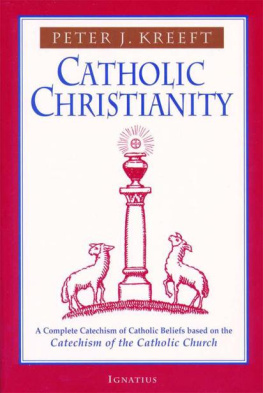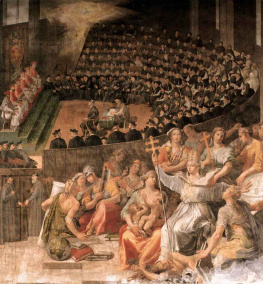Anonymous - The Catechism of the Council of Trent (with Supplemental Reading: Catholic Prayers) [Illustrated]
Here you can read online Anonymous - The Catechism of the Council of Trent (with Supplemental Reading: Catholic Prayers) [Illustrated] full text of the book (entire story) in english for free. Download pdf and epub, get meaning, cover and reviews about this ebook. year: 2014, publisher: TAN Books, genre: Religion. Description of the work, (preface) as well as reviews are available. Best literature library LitArk.com created for fans of good reading and offers a wide selection of genres:
Romance novel
Science fiction
Adventure
Detective
Science
History
Home and family
Prose
Art
Politics
Computer
Non-fiction
Religion
Business
Children
Humor
Choose a favorite category and find really read worthwhile books. Enjoy immersion in the world of imagination, feel the emotions of the characters or learn something new for yourself, make an fascinating discovery.

The Catechism of the Council of Trent (with Supplemental Reading: Catholic Prayers) [Illustrated]: summary, description and annotation
We offer to read an annotation, description, summary or preface (depends on what the author of the book "The Catechism of the Council of Trent (with Supplemental Reading: Catholic Prayers) [Illustrated]" wrote himself). If you haven't found the necessary information about the book — write in the comments, we will try to find it.
Anonymous: author's other books
Who wrote The Catechism of the Council of Trent (with Supplemental Reading: Catholic Prayers) [Illustrated]? Find out the surname, the name of the author of the book and a list of all author's works by series.
The Catechism of the Council of Trent (with Supplemental Reading: Catholic Prayers) [Illustrated] — read online for free the complete book (whole text) full work
Below is the text of the book, divided by pages. System saving the place of the last page read, allows you to conveniently read the book "The Catechism of the Council of Trent (with Supplemental Reading: Catholic Prayers) [Illustrated]" online for free, without having to search again every time where you left off. Put a bookmark, and you can go to the page where you finished reading at any time.
Font size:
Interval:
Bookmark:


The chair in which St. Peter sat as Bishop of Rome.

| Nihil Obstat: | V. F. ODaniel, O.P., S.T.M. T. M. Schwertner, O.P., S.T.Lr. |
| Imprimi Potest: | J. R. Meagher, O.P., S.T.Lr. Provincialis |
| Nihil Obstat: | A. J. Scanlan, S.T.D. Censor Librorum |
| Imprimatur: |  Patritius J. Hayes Patritius J. HayesArchiepiscopus Neo-Eboracensis Neo-Eboraci, die 3 Januarii, 1923 |
Copyright 1976 by Marian Publications, South Bend, Indiana.
Copyright 1982 by TAN Books.
Library of Congress Catalog Card No.: 82-50588
ISBN 978-0-89555-185-6
Printed and bound in the United States of America.
All rights reserved. No part of this book may be reproduced or transmitted in any form or by any means, electronic or mechanical, including photocopying, recording, or by any information storage and retrieval system, without permission in writing from the publisher.
TAN BOOKS
Charlotte, North Carolina
www.TANBooks.com
1982
Introduction
It has been commonly asserted by non-Catholic writers that, prior to the religious rebellion of the sixteenth century, catechisms and catechetical instructionin fact, all religious education of the peoplehad long been neglected, and that to Luther and the Reformers was due the revival of the practice of the ancient Church. From the days of the Apostles and during the first centuries very careful attention was given to Christian doc trine; but in the Middle Ages, we are told, the zealous practices of early times were relaxed, instruction was given up, and ignorance of the things of faith prevailed generally among the common people.
C ATECHETICS D URING THE E ARLY C ENTURIES
That the requirements for admission into the primitive Church were exacting and thorough, and that catechetics, or simple instructions in the fundamental teachings of Christianity were diligently imparted in those early times are facts too well known and universally admitted to require any special proof here. It is clear from the writings of the Fathers, from the ancient liturgies, and from the decrees of the first Councils that the catechumens before their Baptism were obliged to learn by heart the Our Father and the Apostles Creed, and had to be instructed in the meaning of these formulas.
And that instruction was regularly given to all the faithful on Sundays during the Eucharistic celebration or Mass we are assured by early authorities, such as Justin Martyr, Origen, Etheria, the Apostolic Constitutions, and St. Germain.
Not a few homilies of this early period have come down to us. Of these one of the oldest is the work known as the Second Epistle of Clement, written about 130 A.D., which was in reality an exhortation to lead a Christian life, and was used in the meetings of the faithful.
C ATECHETICS IN THE M IDDLE A GES
The whole question, therefore, centers about the Middle Ages, that is, from the beginning of the seventh to the sixteenth century. But a glance at this period will also show that there was no general neglect of proper instruction even during these centuries. This is evident in the first place from the many national and provincial Councils held in various countries commanding priests to instruct their people in the doctrines of faith, especially those contained in the Apostles Creed and the Pater Noster. Already in 529 the Council of Vaison had obliged the priests of Gaul to take boys into their household and teach them to read the Psalms and the Holy Scriptures, and to instruct them in the law of God. This same Council refers to a custom of this kind already existing in Italy. It was from these priests schools that the parochial schools of the Middle Ages and of modern times took their origin. Mention of such parish schools appears in the Acts of several Councils of England, France and Italy in the early Middle Ages. For instance, the Council of Cloveshoe in England, convened in 749, prescribed that the parish priest should always have in his house a school of learners, and that he should not demand for this instruction any recompense from the parents. Likewise Theodulf of Orleans in 797 decreed that gratuitous instruction should be given by the priests in every town and village of his diocese. A similar enactment is to be found in the Constitutions of Otto of Vercelli. The Council of Mayence in 813 decreed in its forty-fifth canon that parents should send their sons to the parish schools to learn in the vernacular the Our Father, the Creed, and all else that was needful for instruction in the Catholic faith. A Council held in Rome in 826 ordained that there should be three kinds of schools established throughout Christendomepiscopal, parochial, in towns and villages, and others wherever there could be found place and opportunity. In the same century we learn that both boys and girls attended the schools attached to the parish churches in the diocese of Soissons.
Episcopal schools for the training of clerics and monastic centers for the education of the children of the neighborhood go back to the fourth or fifth century. In the sixth century we hear of convent schools for girls, as at Arles, and also of open schools conducted by nuns for the benefit of the entire neighborhood. Throughout the Middle Ages monastic schools flourished all over Europe. The children of the rich and poor alike frequented these schools and instruction was imparted gratis; nay, we even read that in these institutions the poor children were sometimes nourished at the expense of the monastery. Toward the close of the medieval period communities of clerics were founded for the express purpose of devoting their lives to the education of the young. Of these the best known is that of the Brothers of the Common Life, founded by Gerard Groot (1340-1384). Thomas Kempis was a member of this community.
Besides the parochial and monastic schools there were still others established during the Middle Ages for the purpose of instructing children. Such were the Chantry, or endowed Schools, where the poor were instructed free of charge. There were also Guild, Hospital, and City Schoolsall engaged in the work of education under the direction of the Church.
In short, we may say with the best historians that throughout the Middle Ages schools for religious and secular education were very numerous and well attended wherever circumstances per mitted.
Nor was religious instruction in medieval times neglected in the home and in the church. From the first centuries great stress was laid on religious training in the family. In this connection we need only recall the names of such Christian mothers as Monica and Paula to understand how faithfully this duty was fulfilled. In the writings of the Fathers also baptismal sponsors are frequently reminded of the serious obligations that rested upon them of providing for the religious education of their god-children. And that these early customs were zealously transmitted down to the sixteenth century we are assured by conciliar decrees and similar documents which repeatedly recalled the duties of religious training incumbent on parents and god-parents. In Luthers own day elementary religious training in the home was by no means overlooked. Biel in 1510 asks in a sermon that parents prepare their children for first Communion; and in 1533 Cochlaeus, speaking of customary home instruction in Germany, says that the children had sucked in (their religion), as it were, with their mothers milk, and this is still the case today among Catholics.
Next pageFont size:
Interval:
Bookmark:
Similar books «The Catechism of the Council of Trent (with Supplemental Reading: Catholic Prayers) [Illustrated]»
Look at similar books to The Catechism of the Council of Trent (with Supplemental Reading: Catholic Prayers) [Illustrated]. We have selected literature similar in name and meaning in the hope of providing readers with more options to find new, interesting, not yet read works.
Discussion, reviews of the book The Catechism of the Council of Trent (with Supplemental Reading: Catholic Prayers) [Illustrated] and just readers' own opinions. Leave your comments, write what you think about the work, its meaning or the main characters. Specify what exactly you liked and what you didn't like, and why you think so.

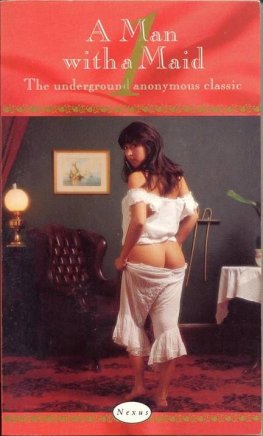

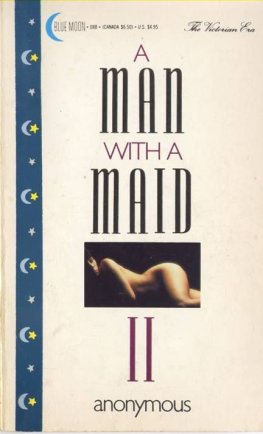

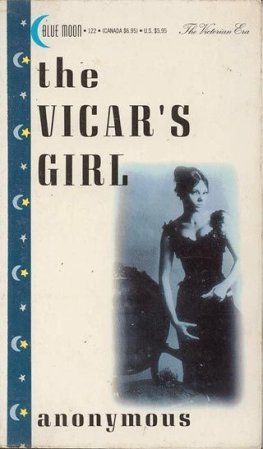
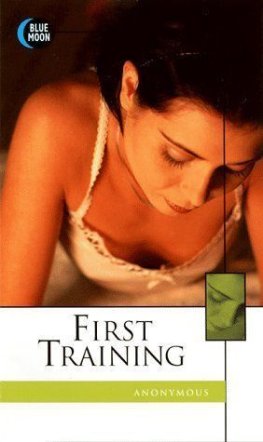
![St. Jean-Marie Baptiste Vianney - The Little Catechism of the Cure of Ars (with Supplemental Reading: Confession: Its Fruitful Practice) [Illustrated]](/uploads/posts/book/270052/thumbs/st-jean-marie-baptiste-vianney-the-little.jpg)
